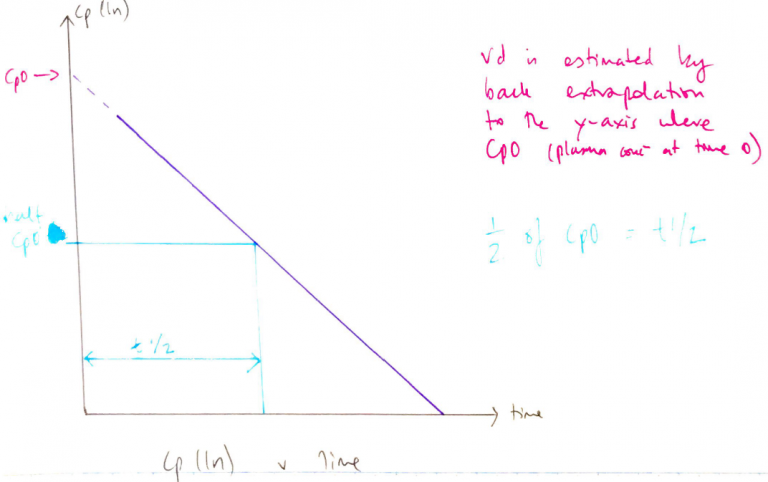Biv: Discuss the pharmacokinetic factors that affect drug half life
Defintion
- The time taken for the [ ] drug to halve
Deriving t ½
- t ½ depends on Vd & clearance
- ∴↑Vd = ↑t ½
- ↑clearance = ↓t ½
- This relationship becomes an equation
- Because t ½ involves halving = inverse of 2 = ln 2
- Ln 2 = 0.693
- By first order kinetics it takes 5 t ½ for a drug to be eliminated 97%
Vd
- Vd = the theoretical volume of fluid into which a drug disperses in order to produce an observed plasma [ ]
- Affected by:
Drug Factors
Molecular size
- ↓size = ↑Vd
Lipid solubility
- ↑lipophilicity = ↑Vd
pKa
- Basic → lower pKa = ↑unionised = ↑Vd
- Acidic → higher pKa = ↑unionied = ↑Vd
Charge
- ↓charge = ↑Vd
PPB
↑PPB = ↓Vd
Patient Factors
Blood flow
- ↑BF = ↑Vd
Age/TBW
- TBW ↓age = ↓Vd
∴Vd high in neonates
Fat
- ↑fat = ↑Vd lipophilic drugs
Renal F, hepatic F
- ↓PPB = ↑Vd
Clearance
- Clearance = the amount of plasma cleared of drug per unit time (mL/min)
- Only applies 1st order kinetics
Clearance (total) = Cl (hepatic) + Cl (renal) + Cl (other)
Cl (hepatic)
- Determined HBF & HER
- Low ER → depends on intrinsic clearance & PPB
- High ER → depends on HBF
Cl (renal)
- Depends on GFR (PPB), reabsorption (passive), secretion (active)
Cl (other)
- Plasma esterases
- Hoffman elimination
- Lung metabolism

